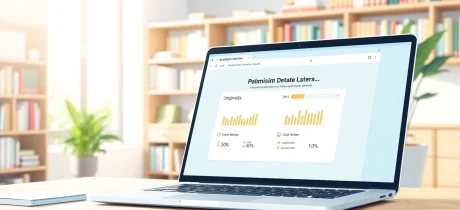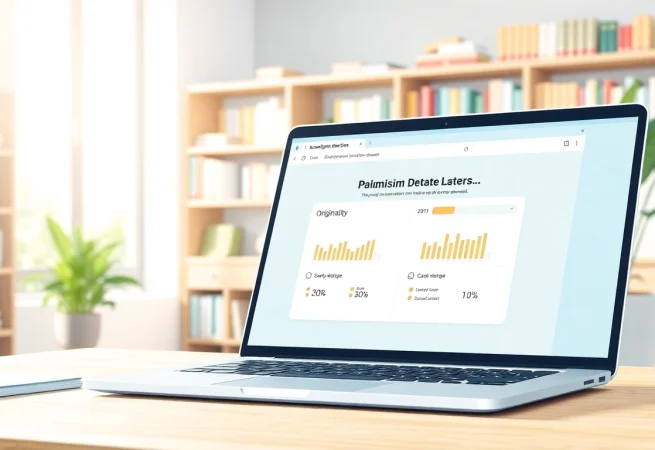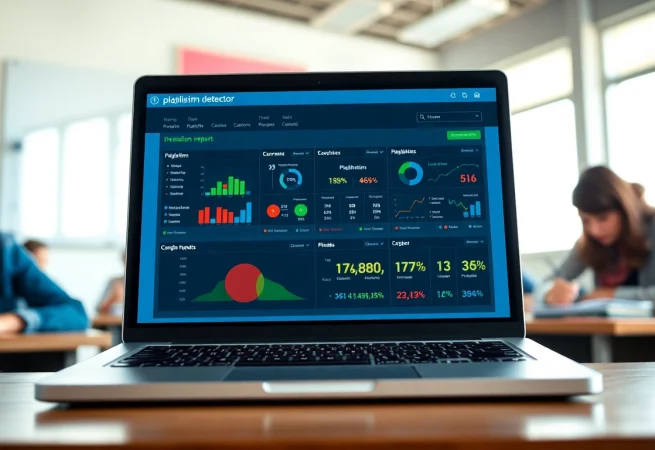

The Impact of Export Tariffs on Global Trade: Insights and Strategies
Understanding Export Tariffs
What Are Export Tariffs?
Export tariffs, also known as export duties, are fees imposed by governments on goods that are sold or shipped out of a country. Unlike import tariffs, which are levied on incoming goods, export tariffs are designed to generate revenue for the government while potentially controlling the flow of certain goods out of the country. This tax is typically a percentage of the value of the exported goods and can vary based on the type of goods being exported, the destination, and the current trade policies in effect. For instance, raw materials might face higher export tariffs to encourage domestic consumption, while high-value finished goods may have lower tariffs to promote competitiveness internationally.
These tariffs directly impact the costs incurred by exporters and can play a significant role in determining market prices. Understanding export tariffs is crucial for businesses involved in international trade, as these fees can influence profitability, pricing strategies, and overall market accessibility. Moreover, it is essential to navigate the complexities of these tariffs to make informed decisions in an ever-evolving trade landscape.
For further information on managing export tariffs effectively, businesses must delve into the regulatory framework and economic consequences.
Types of Export Tariffs
Export tariffs can be categorized into several types based on their purpose and implementation:
1. Ad Valorem Tariffs: These are based on the value of the goods being exported. A stipulated percentage of the selling price is charged. For example, a 10% ad valorem tariff on a product worth $1,000 would amount to $100.
2. Specific Tariffs: These tariffs are fixed amounts charged per unit of goods exported, regardless of their value. For instance, a specific tariff of $50 per ton on iron ore would remain constant regardless of the ore’s market value.
3. Mixed Tariffs: Some countries employ a combination of ad valorem and specific tariffs, meaning that both a percentage and a fixed rate might apply to certain goods. This structure can help balance revenue collection while addressing market conditions.
4. Export Quotas: While not a tariff in the traditional sense, quotas limit the quantity of a specific good that can be exported. This can create artificial scarcity and increase the market price domestically.
5. Temporary Tariffs: Occasionally, governments implement temporary tariffs during times of economic distress or when attempting to regulate trade imbalances.
Each type of tariff has specific implications for exporters and should be considered during strategic planning and market analysis.
Key Regulations Surrounding Export Tariffs
The regulatory environment governing export tariffs is complex and differs significantly from one country to another. However, there are common facets of this regulatory framework that exporters need to be aware of:
1. Legal Framework: In many countries, including the United States, the Constitution and various federal laws lay the groundwork for tariff regulations. Notably, the U.S. Constitution under Article 1, Section 9 prohibits any export taxes, creating a unique environment where export tariffs are generally not imposed.
2. International Agreements: Many countries are bound by international agreements that affect tariff policies, such as free trade agreements (FTAs) like the North American Free Trade Agreement (NAFTA) or the recent United States-Mexico-Canada Agreement (USMCA). These agreements may include stipulations about tariffs that can influence export decisions.
3. Anti-Dumping and Countervailing Duties: These laws are designed to protect domestic industries from foreign competition that might be pricing goods unfairly low or when government subsidies are involved. Understanding how these duties apply can help exporters avoid unexpected costs associated with their products.
4. Export Control Laws: Particular goods, especially those relating to national security, technology, and sensitive materials, may be subject to stringent export controls. Companies must comply with these regulations to ensure that they do not face penalties.
Understanding the regulatory landscape is essential for exporters to navigate potential pitfalls and maintain compliance in an increasingly global trade system.
The Economic Implications of Export Tariffs
How Export Tariffs Affect Trade Balance
Export tariffs can have profound effects on a country’s trade balance, which is the difference between the value of goods it exports and imports. Economists argue that the imposition of export tariffs can lead to several outcomes:
1. Reduced Exports: When tariffs are applied to certain goods, it raises their prices on the international market. Consequently, foreign buyers may seek alternative suppliers, leading to decreased export volumes for domestic producers.
2. Impact on Trade Relations: Other countries may respond to the imposition of export tariffs with retaliatory measures. This escalation can destabilize trade relations, leading to broader economic repercussions.
3. Increased Domestic Prices: To counteract the lower demand from international customers, domestic producers might increase prices, which can trickle down to consumers and increase the cost of living.
4. Balance of Trade Adjustments: The overall effect of export tariffs on a nation’s trade balance might be negative if the tariffs do not sufficiently increase domestic consumption to offset decreases in export activity.
Understanding these implications helps policymakers craft more informed trade policies, ensuring that tariffs serve their intended purpose without incurring unintended negative consequences for the economy.
Impact on Domestic Industries
Export tariffs can have varying impacts on domestic industries, which can be both positive and negative:
1. Protection for Emerging Industries: For developing sectors, higher export tariffs can provide necessary protection against global competitors, allowing these industries time to mature and achieve stability.
2. Cost Increase for Inputs: Many industries rely on imported goods or raw materials. If export tariffs are imposed on these imports, it can lead to cost increases, impacting the overall competitiveness of domestic industries that utilize these inputs.
3. Innovation Stimulant: In certain cases, export tariffs can lead businesses to innovate, seeking ways to reduce costs or improve efficiencies in response to external competitive pressures.
4. Economic Diversification: Governments may use tariffs as a means of fostering economic diversification by encouraging local production and consumption, thereby reducing reliance on foreign goods.
While export tariffs can provide a buffer for domestic industries, it is crucial that such measures are balanced to prevent any negative long-term effects on innovation, pricing, and international competitiveness.
Global Supply Chains and Export Tariffs
In today’s interconnected economy, global supply chains are highly sensitive to changes in tariff policies. Export tariffs can disrupt these supply chains in the following ways:
1. Increased Cost of Goods: Tariffs can lead to increased costs for exporters, which may impact their pricing strategies or the viability of certain products in international markets.
2. Supply Chain Reevaluation: Companies may need to reevaluate their supply chains, potentially seeking alternative sources for raw materials or components that are less affected by tariffs. This might lead to increased operational complexity.
3. Shifts in Global Trade Patterns: As certain countries impose or adjust tariffs, businesses may opt to shift their operations to countries with more favorable trading conditions, leading to a realignment of global supply networks.
4. Resilience Planning: The potential for tariffs to disrupt global supply chains emphasizes the importance of building resilience into supply chain strategies. This may include diversifying suppliers, increasing inventory, or utilizing trade agreements strategically.
Companies engaged in global trade must proactively assess the impact of export tariffs on their supply chains to mitigate risks and optimize operations.
Navigating Export Tariffs in International Trade
Strategies for Compliance and Cost Management
Successfully navigating export tariffs requires strategic compliance and cost management measures. Here are several recommendations for companies engaged in international trade:
1. Stay Informed on Tariff Changes: Regularly monitor changes in tariff policies and international trade regulations. Utilizing tariff tracking tools and subscribing to trade news can provide actionable insights.
2. Conduct Cost-Benefit Analysis: Before proceeding with exports to certain markets, conduct a thorough cost-benefit analysis factoring in potential tariffs and alternative routes.
3. Work with Customs Brokers: Partnering with experienced customs brokers can streamline compliance processes, ensure adherence to regulations, and reduce the risk of costly delays at customs checkpoints.
4. Implement a Compliance Program: Establish a robust compliance program that includes regular training and updates for staff involved in export operations to minimize inadvertent errors that could lead to penalties.
5. Leverage Duty Drawback Programs: Where available, consider utilizing duty drawback programs that offer refunds on tariffs paid on imported materials incorporated into exported products.
Implementing these strategies can significantly improve a company’s ability to manage the challenges posed by export tariffs while optimizing their international trading capabilities.
Tools for Calculating Export Tariffs
Calculating export tariffs can be a complex undertaking, especially given the variations in rates depending on goods, countries, and trade agreements. Utilizing the following tools can help exporters more accurately assess their potential tariff obligations:
1. Harmonized Tariff Schedule (HTS): This document provides the framework for classifying goods and their corresponding tariff rates. In the United States, the HTS can be accessed through the USITC (United States International Trade Commission) website.
2. Tariff Lookup Tools: Resources such as online tariff calculators allow users to enter the codes of specific products to determine their applicable tariff rates quickly.
3. Trade Compliance Software: Various digital platforms offer comprehensive solutions for managing trade regulations, including tariff calculations, compliance records, and updates on changing regulations.
4. Consult with Trade Experts: Engaging with consultants who specialize in international trade can provide tailored solutions, including accurate tariff projections and strategic advice on navigating complex tariff structures.
Employing these tools can decisively improve accuracy in tariff calculation and overall compliance.
Frequently Asked Questions on Export Tariffs
1. Are export tariffs illegal in the US?
The U.S. Constitution (Article 1, Section 9) prohibits export taxes, meaning generally speaking, export tariffs are not allowed. However, the U.S. government has employed alternative measures to regulate the flow of certain goods.
2. What are the effects of tariffs on exports?
Export tariffs can lead to higher prices for domestic goods, impacting competitiveness in international markets, potentially leading to reduced export volumes and alterations to trade agreements.
3. What are the disadvantages of export tariffs?
While export tariffs can protect domestic industries, they may raise consumer prices, disrupt global trade partnerships, and create market instability, necessitating careful consideration by policymakers.
By addressing these often-asked questions, stakeholders can better grasp the implications of export tariffs within international trade.
Recent Trends in Export Tariffs
Case Studies of Recent Tariff Changes
Examining recent case studies can provide valuable insights into the practical effects of export tariffs. For instance:
– U.S.-China Trade Relations: The trade tensions between the U.S. and China led to various tariffs affecting numerous sectors. For example, tariffs on steel and aluminum led to increased production costs for U.S. manufacturers, prompting some firms to move operations overseas.
– The European Union and Agricultural Exports: The EU has imposed tariffs on specific agricultural exports from countries that do not comply with its agricultural standards. These tariffs have influenced the dynamics of food production and export in various member states, prompting adjustments among local farmers and distributors.
Such case studies illustrate the operational realities of export tariffs and the necessity for anticipating these factors in business strategies.
Comparative Analysis: USA vs. Global Trends
Export tariffs are not unique to the United States; many countries employ them as tools for regulating trade. When analyzing the U.S. approach compared to global trends, several observations arise:
1. Variability in Tariff Levels: The United States has traditionally maintained a relatively low tariff regime, whereas other countries might impose higher rates to protect emerging industries better or manage deficits.
2. Responding to Globalization: As globalization has expanded, many countries have begun to explore tariff reductions, showcasing a collective move towards free trade. However, the U.S. has exhibited a more protectionist stance in recent years, particularly during times of economic distress.
3. Retaliatory Measures: Many countries have responded to U.S. tariffs with their own, leading to a cycle of retaliatory tariffs that complicate international trade agreements. This trend has highlighted the interconnected nature of global trade and the potential for tariffs to disrupt multiple economies.
Such comparisons can inform stakeholders about the broader trade landscape and facilitate strategic adjustments when entering international markets.
Future Projections for Export Tariffs
The future of export tariffs will likely be influenced by several trends, including:
1. Evolving Trade Agreements: As countries continue to negotiate new trade agreements, the landscape for export tariffs will change. Multinational pacts potentially offer reductions or eliminations of tariffs, promoting freer trade flow.
2. Technological Advancements: Automation and digital trade tools may alleviate some tariff-related burdens, helping firms adapt more efficiently to changing regulations and cost structures.
3. Shift Toward Sustainability: As countries prioritize environmental impacts, tariffs may be adjusted to promote sustainable practices, where goods produced with higher carbon footprints face additional export fees.
4. Geopolitical Tensions: Continuing geopolitical tensions will likely lead to more stringent tariff policies as nations prioritize domestic industries against perceived threats from foreign competition.
In summary, businesses must remain agile and adaptable to navigate the evolving world of export tariffs effectively.
Conclusion and Recommendations
Best Practices for Managing Export Tariffs
To effectively manage export tariffs, businesses should consider the following best practices:
1. Thorough Research and Compliance: Develop a dedicated team focused on compliance with tariff regulations and trade agreements. Investing in training and tools to stay informed about legislative changes is essential.
2. Financial Modeling: Utilize financial modeling tools to assess how various export tariffs will impact profit margins, leading to better-informed pricing decisions.
3. Engagement with Trade Associations: Join trade associations related to specific industries to gain access to resources, networking opportunities, and advocacy aimed at influencing tariff policies beneficial to members.
4. Scenario Planning: Implement scenario planning to prepare for potential trade policy shifts or geopolitical events. This can aid in devising contingency strategies that minimize risks associated with changes in export tariffs.
By applying these best practices, organizations can enhance their ability to navigate export tariffs effectively and position themselves for success in international trade.
Exploring Alternatives to Export Tariffs
Given the challenges posed by export tariffs, businesses might consider exploring alternatives to achieve their trade goals:
1. Free Trade Agreements (FTAs): Engaging in FTAs that reduce or eliminate tariffs can broaden market access and enhance competitiveness without adverse tariff implications.
2. Subsidies and Incentives: Governments may provide financial subsidies that can offset the costs associated with tariffs, enabling businesses to thrive while facing fewer barriers.
3. Diversification of Markets: Expanding into diverse markets may mitigate tariff impacts by reducing reliance on single markets heavily affected by tariffs.
4. Trade Remediation Services: Utilizing trade remediation consulting services can help businesses identify strategies and best practices that streamline operations and reduce the financial burden posed by tariffs.
By exploring alternatives, businesses can continue to grow their market presence despite the challenges posed by export tariffs.
Final Thoughts on Trade Strategies
Understanding and managing export tariffs is crucial for businesses engaged in international trade. Export tariffs can significantly influence costs, prices, and overall trade dynamics. The implementation of effective strategies, compliance with regulations, and an adaptable mindset can empower businesses to navigate this landscape successfully.
Going forward, companies should anticipate changes in global trade patterns, cultivate relationships that facilitate access to diverse markets, and continuously evaluate their strategies to align with the evolving international trade environment. In doing so, businesses can enhance their resilience and long-term success in the global marketplace.

Navigating the Impact of Export Tariffs on Global Trade Dynamics
Understanding Export Tariffs
1. Definition and Purpose
Export tariffs are taxes imposed by governments on goods and services leaving the country. The key purpose of these tariffs is to generate revenue for the government and regulate the quantity and nature of products being exported. This regulation can serve multiple strategic objectives, including protecting domestic industries, maintaining national security, or achieving specific economic policies. By increasing the cost of exported goods, governments can ensure that local markets remain competitive and that essential resources are available for domestic consumption.
2. Historical Context
The concept of export tariffs is not new; they have been part of trade policies for centuries. Historically, nations used export tariffs as a tool to safeguard emerging industries during the industrialization period, aiming to grow their domestic markets by restricting the outward flow of goods. For instance, during the American Civil War, the U.S. government imposed export tariffs on cotton to control supply and influence international prices. Over time, as global trade evolved, the use of these tariffs shifted; while some nations moved towards free trade policies, others continued to rely on export tariffs to maintain economic stability or to retaliate against perceived unfair trade practices. Understanding this evolution provides insights into current trends in international trade agreements and economic policies.
3. Current Trends in Export Tariffs
As of 2023, countries across the globe are rethinking their approaches to export tariffs. Rising protectionist sentiments, supply chain disruptions, and geopolitical tensions have led to an increase in export tariffs across various sectors. For example, recent trade disputes between major economies like the United States and China have seen both nations impose tariffs to protect domestic interests, ultimately affecting global trade dynamics. Furthermore, the ongoing measures against climate change have led to discussions about carbon tariffs, which aim to regulate emissions by taxing products based on their environmental impact. Companies must stay informed about these shifting trends, as any changes can drastically impact export strategies. For a comprehensive understanding of these implications, resources such as export tariffs can provide valuable insights.
The Economic Implications of Export Tariffs
1. Impact on Domestic Prices
Export tariffs significantly influence domestic pricing structures. When tariff rates are applied, the cost of exporting goods rises, often leading to an increase in prices for consumers within the exporting country. Consequently, domestic producers might raise prices to maintain their profit margins. This scenario can benefit certain sectors by protecting them from foreign competition; however, this same protection can lead to higher costs for consumers and reduced choices in the marketplace. An illustrative case is the imposition of tariffs on steel exports, which raised the prices not only for exporting businesses but also for construction and manufacturing sectors reliant on these materials.
2. Effects on International Trade Relations
Export tariffs can create both cooperation and conflict in international trade relations. Nations that impose tariffs may face retaliation from their trading partners, leading to a cycle of escalating trade tensions. The relationship between the United States and China serves as a pertinent example of this dynamic; both countries introduced severe tariffs on goods that brought immediate economic repercussions on both sides, leading to strained diplomatic relations. On the other side, cooperative agreements like the North American Free Trade Agreement (NAFTA) illustrate how lower or eliminated tariffs can foster better international trade relations and economic collaboration among countries.
3. Case Studies of Tariff Applications
Various case studies can illuminate how different countries have applied export tariffs and the resulting economic impact. For example, when Argentina imposed tariffs on corn and wheat exports to keep domestic food prices stable in response to inflation, it sparked backlash from farmers who claimed it affected their earnings and export opportunities. Similarly, the European Union has grappled with setting tariffs on agricultural exports as part of its Common Agricultural Policy to support local farmers. These case studies highlight the delicate balance of safeguarding local economies while engaging in global trade.
Strategies for Businesses Facing Export Tariffs
1. Compliance and Documentation
To navigate the complexities of export tariffs, businesses must prioritize compliance and thorough documentation. Understanding the specific regulations surrounding export tariffs in various countries is crucial. Businesses should invest in resources or consult with experts who specialize in international trade laws to ensure adherence to all legal requirements. Maintaining accurate records, such as invoices, shipping manifests, and certificates of origin, will not only streamline shipping processes but also safeguard against potential penalties from regulatory bodies.
2. Mitigating Costs and Risks
Companies can adopt various strategies to mitigate the costs and risks associated with export tariffs. These strategies include diversifying supply chains to reduce dependency on any single market, thus minimizing exposure to country-specific tariffs. Additionally, businesses can explore alternative markets with lower tariff obligations as a way to sustain competitiveness. Implementing robust pricing strategies, such as value-based pricing which reflects the perception of worth rather than solely cost, can also help absorb some of the additional costs associated with tariffs.
3. Exploring Alternative Markets
The changing landscape of global trade presents opportunities for businesses to explore new markets. As various regions experience differing trade policies, targeting emerging markets may yield fruitful revenue streams. For instance, businesses in North America may consider entering markets in Southeast Asia or Africa, where demand is growing and tariffs are often lower. Conducting thorough market research to identify these opportunities will be essential, along with tailoring products and marketing strategies to meet the preferences and regulatory requirements of those regions.
Policy Changes and Future of Export Tariffs
1. Legislative Developments
Constant shifts in political landscapes worldwide often lead to legislative changes regarding export tariffs. As countries navigate economic recovery efforts post-pandemic, there is potential for new policies to emerge. Governments may look to eliminate certain tariffs to stimulate trade while balancing protectionist measures for strategic industries. Keeping abreast of these legislative developments will allow businesses to anticipate changes that could impact their operations and adjust strategies accordingly.
2. Predictions for Global Markets
Experts predict that the future of export tariffs will be heavily influenced by ongoing geopolitical tensions, economic recovery, and climate change initiatives. It is expected that many countries may adopt more targeted tariffs rather than blanket ones, aiming to protect specific industries rather than restricting entire categories of goods. Additionally, the growing demand for sustainably produced goods may prompt new tariffs aimed at importing sustainably sourced products, further transforming the market landscape. Companies should proactively develop flexible strategies to adapt to these evolving conditions in global markets.
3. Influence of International Agreements
International trade agreements play a critical role in shaping tariff policies. Agreements such as the Trans-Pacific Partnership (TPP) or the African Continental Free Trade Agreement (AfCFTA) work towards reducing or eliminating tariffs on trade between member countries, fostering economic cooperation. As nations seek to rebuild trade relationships in a post-pandemic economy, the influence of these agreements will be paramount for businesses looking to navigate tariffs effectively. Staying informed about current negotiations and assessing how they impact export tariffs can provide a competitive advantage.
Measuring Success in Navigating Export Tariffs
1. Key Performance Indicators
To evaluate how effectively a business is navigating export tariffs, establishing key performance indicators (KPIs) is essential. Metrics such as cost per unit exported, the percentage of income affected by tariffs, and the time taken to comply with documentation requirements can offer insights into operational efficiency. Additionally, companies should analyze their export growth rates compared to peers in similar markets to determine competitive positioning in light of tariff impacts.
2. Long-term Strategic Planning
Success in navigating export tariffs is not just about short-term goals; it requires long-term strategic planning. Companies should develop comprehensive plans that consider various economic scenarios, allowing for flexibility in response to evolving tariff landscapes. This planning should include contingency strategies for potential tariff increases or shifts in trade policies. Engaging in regular strategic reviews can help businesses stay ahead of changes and adapt their operational approaches to maintain global competitiveness.
3. Insights from Industry Leaders
Learning from successful industry leaders can provide invaluable insights into best practices for managing export tariffs. Many leaders emphasize the importance of continuous adaptation and responsiveness to market changes. For instance, companies with robust advocacy and regulatory teams tend to navigate tariffs more effectively, often engaging with policy makers to create favorable conditions for their industries. Additionally, industry forums and networks can be great resources for sharing strategies for overcoming common challenges posed by export tariffs.

A Complete Guide on How to Buy Section 8 Housing for Your Investment Portfolio
Understanding Section 8 Housing
What is Section 8 Housing?
Section 8 housing refers to a federal government program that assists low-income families, elderly, and disabled individuals in affording safe and decent housing. Officially known as the Housing Choice Voucher Program, it allows eligible participants to rent a housing unit of their choice while the government subsidizes a significant portion of the rental cost. The program primarily aims to improve the quality of life for low-income families by providing them with housing options and empowering them to choose where they live.
Benefits of Buying Section 8 Housing
Investing in Section 8 housing can provide multiple advantages. The foremost benefit is the stability of income. Since the government pays a portion of the rent directly to landlords, landlords often receive reliable monthly payments, minimizing the risk of tenant default. Moreover, properties that participate in the Section 8 program tend to have lower vacancy rates as many low-income families depend on these vouchers to secure housing. Additionally, investing in Section 8 housing can be an avenue for social impact; it allows investors to contribute positively to their communities by providing safe housing to those in need.
Investing in Low-Income Housing
Low-income housing investments, particularly through Section 8, can be seen as a resilient asset class. These properties often maintain demand even during economic downturns, as the need for affordable housing remains constant. Furthermore, federal and state incentives for low-income housing can enhance profitability, including tax credits and grants aimed at encouraging affordable housing developments. For those looking to strengthen their investment portfolio and achieve stable, long-term returns, buy section 8 housing can be an excellent option.
How to Buy Section 8 Housing
Finding Properties with Existing Section 8 Tenants
One common strategy for investing in Section 8 housing is to find properties that already have Section 8 tenants in place. This approach offers the advantage of immediate rental income, as the tenant’s voucher essentially guarantees payment. To locate these properties, investors can check listings from real estate agents who specialize in Section 8 properties, as well as online real estate platforms that showcase affordable housing options. Networking with local housing authorities can also be beneficial, as they may have resources or leads on available properties.
Working with Real Estate Agents Specializing in Section 8
Partnering with a real estate agent who understands the nuances of Section 8 housing can be a game-changer for prospective investors. These specialists can provide insights on the best areas for investment, help navigate the complexities of property management, and guide buyers through the purchasing process. A good real estate agent will have established relationships with housing authorities and knowledge of properties that comply with program requirements, ensuring that investors are presented with viable options that meet the criteria for Section 8 housing.
Evaluating Property Condition and Location
Analyzing a property’s condition and its location is crucial when buying Section 8 housing. Properties must meet specific safety and livability standards set by the housing authorities to qualify for the program. Conducting a thorough inspection is essential to ascertain if any repairs or renovations are needed, as this can affect both the cost and viability of the investment. Furthermore, location plays a pivotal role in attracting tenants. Areas with access to public transportation, schools, and essential services are often preferred by Section 8 participants, making them more desirable for landlords seeking to reduce vacancy rates.
Financing Your Section 8 Housing Purchase
Understanding Funding and Grants Available
Various financial resources can support buyers of Section 8 housing. Federal, state, and local programs often provide grants and low-interest loans specifically aimed at purchasing and rehabilitating properties. Investors should explore these options early in the process to determine eligibility. Additionally, local housing authorities may offer financial assistance programs that could help cover the costs associated with obtaining and modifying Section 8 properties to meet compliance standards.
Exploring Mortgage Options for Investors
Investors have numerous mortgage options when financing Section 8 housing. Traditional loans, FHA loans, and even VA loans may be applicable depending on qualifications and property types. It’s essential for buyers to assess their financial situations and shop for the best interest rates and terms to maximize cash flows. Some lenders may even specialize in real estate investments, offering tailored products designed for those interested in income-producing properties like Section 8 housing.
Calculating Potential ROI for Section 8 Housing
Understanding the potential return on investment (ROI) is a critical part of any real estate investment strategy. For Section 8 housing, calculating ROI can involve considering factors such as rental income, property management costs, vacancy rates, and maintenance expenses. Investors should also factor in the government’s subsidized portion of the rent when evaluating potential cash flows. Utilizing tools like the 1% rule, which states that a rental property should generate at least 1% of its purchase price in monthly income, can also serve as a useful guideline in assessing profitability.
Managing Section 8 Properties
Being a Successful Section 8 Landlord
Successful management of Section 8 properties involves both understanding landlord responsibilities and the specific requirements of the housing program. Landlords must ensure that properties are kept in good condition, comply with health and safety regulations, and maintain effective communication with tenants. Regular inspections and prompt responses to repair needs not only fulfill obligations but also enhance tenant satisfaction and retention, thus ensuring a steady flow of income.
Navigating Tenant Rights and Responsibilities
Understanding tenant rights and responsibilities is vital for landlords participating in the Section 8 program. Tenants generally have the right to a safe and habitable living environment, freedom from discrimination, and privacy within their homes. Landlords must respect these rights while also establishing clear leasing agreements that outline tenant responsibilities, including timely rent payments and property maintenance. Familiarizing oneself with local and federal laws governing rental agreements can help mitigate disputes and foster a cooperative landlord-tenant relationship.
Common Challenges in Section 8 Housing Management
Managing Section 8 properties can present unique challenges. These issues may range from navigating the bureaucratic landscape of housing authorities to dealing with compliance with various property standards. Furthermore, as the market fluctuates, landlords may face additional risks such as subsidy reductions or changes in local regulations impacting the program’s structure. Developing a robust property management plan, staying informed on policy changes, and actively engaging with housing agencies can help landlords effectively mitigate these challenges.
Future of Section 8 Housing Investments
Market Trends for Low-Income Housing
The demand for low-income housing continues to grow in the United States, driven by ongoing housing affordability challenges. As housing prices escalate, many families turn to Section 8 housing as a viable option. Recognizing the importance of affordable living, municipalities are increasingly prioritizing investment in low-income housing initiatives, which may lead to enhanced support systems for landlords. Additionally, emerging trends in urban revitalization and community development signal a positive outlook for Section 8 investments concentrated in recovering neighborhoods.
How Policy Changes Affect Section 8 Housing Value
Policy changes at the federal and state levels can significantly impact the value of Section 8 housing. For instance, adjustments to subsidy amounts, eligibility criteria, and program funding can all affect property demand and rental prices. Investors must remain vigilant and informed about impending legislative changes that may impact their asset’s value. Engaging with local housing authorities and monitoring policy discussions can provide investors with insights into how to adjust their strategies accordingly.
Strategies for Long-Term Success in Section 8 Investments
To ensure long-term success in Section 8 housing investments, it is crucial to develop a well-rounded strategy that emphasizes both financial stability and community involvement. Investors should continually evaluate their portfolios, explore opportunities for reinvestment and property improvements, and stay abreast of market dynamics. Building positive relationships with tenants and housing agencies, staying engaged with policy developments, and maintaining a focus on delivering quality living environments are key to sustaining successful, impactful investments in Section 8 housing.

Streamlining the Mortgage Process with AI: Efficiency, Personalization, and Impact
Understanding the Mortgage Process with AI
The mortgage process can be lengthy and complex, involving numerous steps from application to closing. Traditional methods often incur delays due to manual processes, document verification, and the need for personalized service. However, the integration of mortgage process with AI is transforming this landscape. With advancements in technology, AI is streamlining operations, reducing costs, and enhancing customer experiences.
What is the Mortgage Process?
The mortgage process typically consists of several stages, starting with pre-approval and ending with the closing of the loan. This typically includes:
- Pre-approval: The lender assesses the borrower’s creditworthiness and financial situation.
- Application: The borrower submits detailed information and documentation.
- Processing: Verification of provided information, including income and assets.
- Underwriting: The lender evaluates the risk and decides on loan approval.
- Closing: Finalizing the loan where documents are signed and funds are disbursed.
How AI Integrates into Mortgage Procedures
AI technologies are increasingly integrated at various stages of the mortgage process. For example, AI can automate data input during application processing, analyze credit reports in real-time, and utilize chatbots for preliminary customer service queries. Each of these applications accelerates workflow, ensures accuracy, and enhances user experience, making the process far more efficient than traditional methods.
Benefits of Using AI in Mortgages
The benefits of utilizing AI in the mortgage process are manifold. They include:
- Increased Efficiency: Automation reduces the time spent on manual tasks.
- Enhanced Accuracy: AI minimizes human error, leading to more accurate processing.
- Cost Savings: Reduced operational costs can lead to lower fees for borrowers.
- Improved Customer Experience: Faster responses and services lead to higher satisfaction among borrowers.
- Data Insights: AI can analyze large datasets to uncover trends and improve lending practices.
Key AI Technologies Transforming Mortgage Applications
Machine Learning and Data Automation
Machine learning algorithms can be trained on historical mortgage data to predict loan performance and assess risk. These algorithms identify patterns that are not immediately apparent to human reviewers. For example, if a borrower has similar financial habits to previously successful applicants, AI can flag this as a positive indicator for loan approval. By automating data entry and processing, lenders can significantly reduce the time it takes to close a mortgage.
Natural Language Processing for Client Interaction
Natural Language Processing (NLP) is another critical technology that enhances the mortgage experience. AI-driven chatbots utilize NLP to communicate with clients, answering questions in real time, guiding them through processes, and providing updates on application status. This technology ensures a more interactive experience for borrowers, facilitating engagement without the need for constant human oversight.
Predictive Analytics for Better Decision-Making
Predictive analytics powered by AI helps mortgage lenders make informed decisions based on data-driven insights. By analyzing borrower data, market trends, and even external factors like economic conditions, lenders can tailor products and strategies to fit market demands. This allows them to identify potential default risks early and adjust their strategies accordingly.
Challenges in Implementing AI in the Mortgage Process
Data Privacy and Security Concerns
As AI systems handle sensitive information, data privacy and security become paramount. Mortgage companies must ensure that their AI systems comply with legal regulations such as GDPR or CCPA to protect borrower data. This may involve encrypting data and implementing access controls to prevent unauthorized use.
Regulatory Compliance Issues
The mortgage industry is heavily regulated, and as AI technologies evolve, they must align with these regulations. Compliance presents a significant challenge, as AI systems often require adjustments to meet newly established rules. Lenders must remain vigilant, regularly updating their compliance frameworks.
Resistance to Change within the Industry
Many staff members may resist adopting AI technologies due to fear of job displacement or discomfort with new systems. It’s crucial for companies to provide training and showcase the value of AI in enhancing rather than replacing human roles. A culture that embraces change and emphasizes collaboration between human expertise and AI efficiency often proves the most successful.
Real-World Examples of AI in Mortgage Processing
Case Studies: Successful AI Implementations
Several mortgage lenders have successfully integrated AI into their processes. For instance, a leading lender adopted AI to analyze borrower credit profiles, decreasing the time necessary for underwriting by up to 30%. This operational efficiency not only improved productivity but also increased customer satisfaction as borrowers received faster loan approvals.
Quantifiable Benefits: Time and Cost Savings
Quantifying the benefits is crucial for understanding the overall impact of AI on the mortgage industry. For instance, research has shown that lenders using AI-powered underwriting can cut decision times from weeks to days, reducing operational costs by an estimated 20%. Through automation and improved accuracy, the industry can better allocate resources and serve clients lebih effectively.
Client Testimonials and Feedback
Client feedback is critical in assessing the effectiveness of AI integration. Borrowers have expressed satisfaction with AI-enhanced services, particularly in instances where they received personalized mortgage options tailored to their specific needs and financial situations. Testimonials highlight how AI has enabled lenders to offer more competitive rates with less friction in the application process.
The Future of the Mortgage Process with AI
Predictions for AI Trends in Mortgages
The future of the mortgage process looks promising with the continued integration of AI technologies. Trends indicate that AI will become more sophisticated, leading to better risk assessments, personalized lending solutions, and improved regulatory compliance. As AI capabilities advance, the mortgage process will likely become increasingly streamlined and efficient.
The Role of Human Element in AI-Driven Processes
While AI offers numerous advantages, the human element remains vital. Personal relationships, empathy, and understanding are aspects that AI cannot replicate. Therefore, the most effective mortgage processes will likely involve a hybrid model where AI handles routine tasks while loan officers engage with clients for more personalized service and support.
Preparing Your Business for Upcoming Changes
To effectively prepare for upcoming changes, mortgage companies should invest in training their workforce on new AI tools and analytics. Staying informed on trends and technologies is crucial, as is fostering a culture that embraces innovation. Firms that recognize the importance of adaptability will be better positioned to thrive in an AI-enhanced lending landscape.










